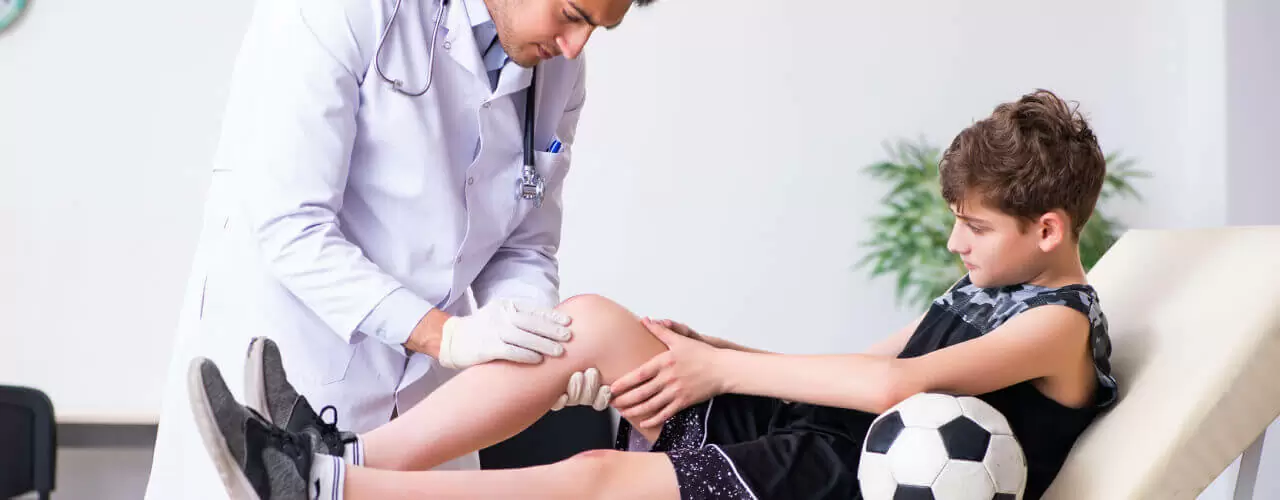When you participate in sports, you run the chance of getting hurt. Knowing the most frequent sports injuries can help you avoid them or treat them properly if they happen. Participating in sports, whether running marathons or playing football, can raise your chances of getting hurt. Sports injuries can develop for a variety of reasons, including being hit by another player, not receiving sufficient training, using faulty equipment, and failing to stretch before engaging in vigorous exercise.
Sports are often physically demanding, requiring our bodies to withstand a variety of stresses and traumas. Acute sports injuries occur when a muscle is rapidly stretched beyond its elasticity. This can happen anywhere, including on a sports field or in your garden. When it comes to treating a minor injury, you don’t need the help of a physical therapist, professional trainer, or a doctor. All you need is a rudimentary understanding of treatment and rehabilitation procedures.
Most Common Sports Injuries While Playing The Game
Knee Injuries
Orthopedic doctors treat knee injuries as one of the most prevalent sports injuries. One of the most significant ways to avoid injury is to replace your running shoes and insoles on a regular basis. Take a few days off from exercise after an injury and take some anti-inflammatory medication.
Shoulder Injury
Injuries to the shoulders are frequent in a variety of sports. Stretching correctly before exercise is the best method of prevention. Using a rest and taking anti-inflammatories are helpful treatments once again.
Tennis Elbow
Repetitive motions of the elbow, such as golf or tennis swings, can irritate or rupture the elbow’s tendons. Epicondylitis is most frequent in those between the ages of 30 and 60, and it commonly affects the outside of the elbow. Elbow injuries account for around 7% of all sports injuries. Strengthening exercises are the best preventative, and RICE, physical therapy, and anti-inflammatories are the best treatments.
Achilles Tendinitis
The Achilles Tendon (the back of the ankle) can become inflamed and painful if it is overused. Stretching and calf muscle-strengthening activities can help prevent this ailment. Use RICE (rest, ice, compression, and elevation) as well as anti-inflammatories if it becomes injured.
It’s best to wait until it’s completely healed before returning to activity.
Concussion
This injury is frequently caused by a blow to the head, which causes confusion and dizziness, among other symptoms. Our most excellent prevention advice is to stay away from all contact sports. Time, rest, and acetaminophen are all necessary for recovery. Sports injuries clinics will help relieve your pain and injuries with various methods such as manual therapy, sports rehabilitation, etc.
Groin Strain
This sort of injury usually occurs when an athlete makes an abrupt change of direction while running. This is one of the most severe sports injuries, and stretching is the best preventative measure. Take it easy for a couple of weeks, employ RICE and anti-inflammatory drugs to recover from groin pulls.
Shin Splints
Inflammation of the muscles that surround the inner side of the shinbone causes shin splint discomfort. The best preventative is to wear decent shoes and stretch often. Apply ice to the injury, stretch it, and take anti-inflammatories to relieve the pain.
Lower Back Pain
A variety of sporting activities might cause lower back pain. Warming up correctly is your greatest bet for prevention, followed by anti-inflammatories, RICE, and complete stretching. It can eliminate this type of pain with physical therapy treatment.
Fractures
Stress fractures are small cracks in the bone induced by overuse and repetitive effort, such as jumping up and down and sprinting great distances. They can also form due to the routine use of a bone that has been weakened by osteoporosis. These fractures commonly occur in the lower leg and foot’s weight-bearing bones.
Treatment For Sports Injury
The acronym R.I.C.E. is a helpful guide for treating most acute injuries right away. The following are the stages of doing R.I.C.E. treatment:
- Rest: Reduce the forces acting on the affected body part. This usually entails ceasing your athletic activity and resting the area entirely with crutches, a sling, or another device.
- Ice: Ice is effective at reducing pain while also reducing swelling and inflammation. Many athletes discover that icing an acute injury relieves their pain without the use of painkillers.
- Compress: Compression is achieved by placing a compression bandage across the wounded area of the body firmly but not tightly. Constriction that is too tight can exacerbate your symptoms and produce other issues.
- Elevation: Elevating the wounded limb can also assist in minimizing swelling and inflammation, as well as pain.
Your doctor will evaluate what, if any, extra treatment is required after the initial healing time and may send you to a specialist for your specific injury. Sports injuries can be treated in a variety of ways, including:
- Immobilization with a splint, cast, or brace
- Medication for pain
- Pain-relieving injections, such as a cortisone shot
- Physical therapy
- Surgery
Final Thoughts!!
It’s not rare for amateur or professional athletes to be hurt from time to time. The R.I.C.E. approach can be used to treat a minor muscle injury at home. Rest, ice, compress and elevate the damaged area during the first two days after your injury. To ease pain, alternate cold and heat treatments once the edema has subsided.
